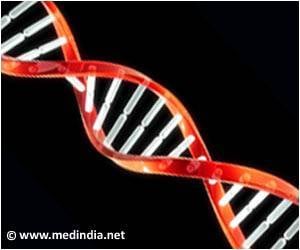The study reveals that a variety of genetic, behavioral, and environmental influences combine to contribute to mental health issues in adolescents.

WashU researchers use genetics to find psychopathology risks
Go to source). This innovative methodology has revealed important insights into potential contributors to psychopathological genetic risk, including stressful life events and screen time. While the results published in Nature Mental Health, do not establish causation, they offer promising avenues for understanding the development of psychiatric disorders in adolescents.
“We’re catching all the little fish here,” said Nicole Karcher, assistant professor of psychiatry at WashU Medicine, likening their genetic screening tools to trawling the ocean.
“But now we get to wade through the fish that we caught, and future steps include understanding the extent to which these are meaningful in terms of their ability to reduce risk for mental health concerns.”
‘Did You Know?
50% of all lifetime mental illnesses begin at age 14, and 1 in 7 teenagers experience a mental disorder. #medindia #mentalhealth #teenagers’





50% of all lifetime mental illnesses begin at age 14, and 1 in 7 teenagers experience a mental disorder. #medindia #mentalhealth #teenagers’
Advertisement
Understanding Genome-Wide Association Studies (GWAS)
Much of what we know about links between the genome and behavior comes from Genome-Wide Associations Studies (GWAS), which identify links between specific genetic variants across the genome and a feature of interest, also known as a phenotype. Phenotypes can range from physical characteristics to psychiatric disorders (e.g., depression, anxiety).Many behavioral disorders are correlated at the genetic level. Results from a GWAS scan for genetic links to depression, therefore, may also reflect genetic associations with frequently co-occurring conditions such as anxiety.
Advertisement
A Data-Driven Approach to Genetic Research
“We know that one behavioral variable is not going to be the only association with genetic risk, so we were interested in taking a more agnostic, data-driven approach to the wealth of information that is available in large datasets,” said Karcher.Doing so would hopefully identify not only expected associations between genetic risk and psychiatric symptoms but also potential novel associations that could improve insight into how psychiatric disorder risk may unfold.
Advertisement
Methodological Shift: From Genetic to Phenome-Wide Association Study (PheWAS)
So senior author Karcher and first author Sarah Paul, a graduate student in Ryan Bogdan's Behavioral Research and Imaging Neurogenetics Laboratory at Art & Sciences, ran what’s called a phenome-wide association study (PheWAS) that inverts the GWAS.Rather than starting with the psychiatric condition and looking for associated genetic variants, their PheWAS started with genetic variants known to be linked with mental health disorders and examined their relationship to hundreds of measured variables reflecting behavior, symptoms, environments, health problems, and other phenotypes. They included approximately 1,300 to 1,700 phenotypes from the Adolescent Brain Cognitive Development (ABCD) Study.
Casting a Wide Net: Identifying Risk Factors
“We took a pretty broad approach,” said Paul, describing different phenotypes as “anything from impulse control problems and problematic behavior or psychotic-like experiences to screen time, to how much caffeine they consumed.”Think of it as fishing with a big net.
That means they want to identify associations between genetic predisposition and potentially modifiable risk factors that can be potentially addressed before the onset of psychopathology, Bogdan, the Dean’s Distinguished Professor of Psychological & Brain Sciences in Arts & Sciences, said.
The results of the PheWAS show some surprises and confirm some of what they already know about genetic risks and behaviors that are associated with mental health disorders in youth.
Identification of Genetic Risk Factors
The WashU researchers took 11 GWAS and created four broad genetic risk factors, or polygenic scores: neurodevelopmental, internalizing (e.g., depression, anxiety), compulsive, and psychotic. Below are some of the associations they found in those categories:- Genetic risk for neurodevelopmental psychopathology (predominantly ADHD and Autism Spectrum Disorder, as well as Major Depressive Disorder and problematic alcohol use) was associated with some 190 phenotypes including inattention and impulsivity issues, as well as total screen time, sleep problems and psychotic-like experiences. Even environmental conditions like neighborhood crime rates and lower parental monitoring are associated with neurodevelopmental genetic risk.
- Genetic risk for internalizing behavior (Major Depressive Disorder, Generalized Anxiety Disorder, PTSD, as well as problematic alcohol use) was broadly associated with some 120 phenotypes such as depression, stressful life events, psychotic-like experiences, and screen time.
- Psychotic risk (predominantly Schizophrenia and Bipolar Disorder) had few phenotype associations aside from lower school involvement and more consumption of energy drinks.
Unexpected Findings on Genetic Liability
Karcher said it was somewhat surprising that “genetic liability” for mental health concerns may manifest through potentially modifiable behaviors in childhood and early adolescence.The research sorted hundreds and hundreds of variables potentially associated with genetic risk, and the results highlighted several associations, including the association between neurodevelopmental genetic risk and screentime, she added.
“The PheWAS was able to point out these pockets of associations that may not have been found otherwise,” she said.
Genetic Influences on Caffeinated Beverage Consumption
One such pocket was the association between psychotic disorder genetic risk and energy drink consumption. These studies are looking at correlation, not causation, so they cannot conclude that energy drink consumption causes psychotic disorders. It could be that there are genetic components that make these individuals more at risk for psychotic disorders and those same components might make these individuals more likely to consume caffeinated beverages.A similar phenomenon could be a play with the strong association between screen time and neurodevelopmental risk.
The point of the PheWAS is not to sort those details of causation but to get pointed in the right direction with “a 20,000-foot view of the associations,” Karcher said.
Understanding Behavioral Changes: Tracking Youth into Adulthood
Time will tell as the ABCD kids get older and genomic databases get more diverse. “Following these youth into early adulthood will help better inform how genetic risk is associated with things like screen time, psychopathology, symptoms, and sleep over the course of adolescence into early adulthood,” Paul said. “That will help paint a clearer picture of how these links between your overall genetic risk and your behavior and traits change or don’t change over time.”Overall, the present work illustrates how the PheWAS technique can be used to identify potential targets for future prevention and early intervention strategies, with this study identifying several potentially modifiable targets, such as screen time and caffeinated beverage consumption, that could represent early “catches” for reducing risk for developing mental health concerns.
The Need for Diverse Genetic Data in Research
Previous genome-wide studies of psychiatric diagnoses/phenotypes make use of data from individuals most genetically similar to European reference populations, with limited well-powered GWAS available for other populations in the world. So, one major limitation of this study was that because the GWAS predominantly used data from European reference populations, only ABCD data from individuals with European ancestry could be used in the PheWAS.“That really limits the generalizability of these findings,” Paul said, “but as more GWAS become available in individuals genetically similar to other reference populations and as more sophisticated polygenic score approaches are developed, we should be able to expand the study population to be more inclusive.”
Reference:
- WashU researchers use genetics to find psychopathology risks - (https://source.washu.edu/2024/10/washu-researchers-use-genetics-to-find-psychopathology-risks/)
Source-Eurekalert















